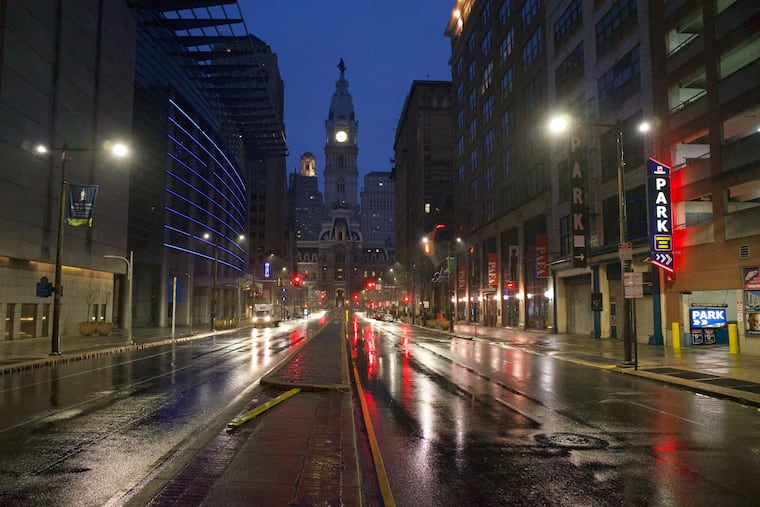Local arts groups are still at risk of folding, according to a new survey
'There is a very real possibility that some of these at-risk groups may not survive," says the interim leader of the Greater Philadelphia Cultural Alliance, which conducted the survey.

Philadelphia-area arts and culture groups lost out on hundreds of millions of dollars in ticket sales and other revenue in the last year. Thousands of jobs have gone dormant. And as they await federal assistance, Philadelphia arts leaders are indicating that absent such aid, some groups might be forced to fold.
Just over 40% of organizations from the five-county area responding to a Greater Philadelphia Cultural Alliance survey are not likely to survive beyond this fall at their current levels of contributed and earned income, the alliance says.
These 102 “at risk” organizations are mostly (72%) small — those with budgets under $1 million.
But the at-risk contingent includes midsize groups with $1 million to $3 million budgets (accounting for 18% of the at-risk organizations) and large groups with budgets over $3 million (10% of the at-risk group). Arts organizations from nearly every artistic discipline are among those at risk, according to the GPCA study, made public Tuesday. The study does not name any names.
“The arts and culture sector is extremely vulnerable over the long term,” said GPCA interim president and CEO Priscilla M. Luce.
Of the 102 at-risk organizations, 59% cite “limited cash savings and reserves” as one of their top financial concerns, said Luce. “So, I think there is a very real possibility that some of these at-risk groups may not survive because they run out of cash before [federal] stimulus money is distributed or because they don’t have the cash reserves to sustain until the sector is fully reopened from a capacity perspective,” she said.
“Without additional support, there is a clock ticking now, and that is something everyone needs to be aware of.”
Local organizations have already received millions in federal relief, and $15 billion more was promised to arts and entertainment groups and venues through the Shuttered Venue Operators Grant program enacted in December. The SVO total was sweetened with an additional $1.25 billion as part of the $1.9 trillion pandemic aid and stimulus package recently signed into law.
But the SVO application process has not yet opened, and as the pandemic wears on, so does the downtick in revenue.
Private philanthropy has helped to fill the gap. Groups have soldiered on with online concerts and events, and some have recently reopened with limited capacity. Government restrictions on capacity have started to ease, but not to levels that make a resumption of performances viable for many.
“We would like to encourage that arts and culture be considered for as wide a reopening and return to full capacity as quickly as possible,” says Luce, adding that “safety is of utmost importance.”
In the year since the start of the pandemic shutdown, Philadelphia-area culture groups are projected to have experienced a total revenue loss of $371.7 million, according to figures reported by groups for the survey as well as a separate analysis.
“It’s been a challenging time,” says Elizabeth Grimaldi, executive director of the Fleisher Art Memorial. Earned income was cut in half by the pandemic for the venerable South Philadelphia community art center and school, “which is a big hit to Fleisher, and I feel a lot of pain for the number of teaching artists and models because we certainly couldn’t offer as many classes.”
Still, the Fleisher balanced its budget for the fiscal year that ended in June, she said.
Miriam Davidson, artistic director of the ANNA Crusis Women’s Choir, says that she doesn’t know when it will be safe for the group to once again gather for rehearsing and performing. With no ticket revenue at all right now, the group has managed to balance the budget “thanks to our donors, who have been very generous.”
The Kimmel Center, home to many of the city’s major music and dance companies, plans to apply for the maximum allowable amount of federal assistance. Without it, the arts center is forecasting a deficit of at least $6.2 million, a spokesperson for the center said. Normally, the Kimmel would have an annual budget of $54 million.
The Philadelphia Orchestra, Mann Center, and other groups are also eyeing federal assistance.
Among other findings from the arts and culture sector in the GPCA survey:
• The median level for ticket revenue and other earned income at local groups dropped to 23% of budget in fiscal year 2020 from 40% the previous year.
• Arts and culture jobs were slashed, with 2,452 positions laid off or furloughed, 801 positions continued but with reduced hours, and with 3,316 contractors having had their work canceled or significantly reduced.
• 38% of organizations reported curtailing or significantly cutting back programs for school-age children and vulnerable populations like people experiencing homelessness, residents of medical facilities, families with children on the autism spectrum, and incarcerated individuals.
“It’s a big number if you look at the contraction that is taking place -- the layoffs, the furloughs, the programming reductions we’ve outlined, it’s significant,” says Luce, noting the $371.7 million in combined lost revenue.
What if depressed revenue levels continue? On the artistic and programmatic side of the ledger, GPCA notes that 41 of the 102 at-risk arts and culture groups address racial justice, 22 serve LGBTQ+ populations, 21 provide accessibility to the arts for people with disabilities, and 21 groups create workforce development opportunities.
Says Luce of the potential losses: “What we are realizing is that they will be permanent if there is not additional support for the sector.”